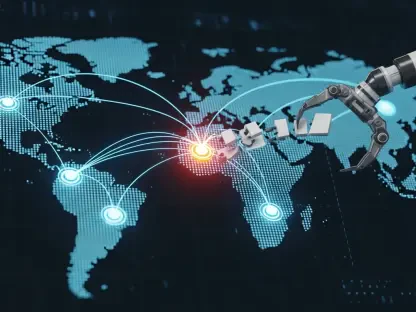In an era where technology drives the backbone of critical infrastructure, a disturbing trend has emerged that could jeopardize public safety on a massive scale, with recent findings from a leading cybersecurity firm revealing a sharp increase in the number of Industrial Control Systems and Operational Technology (ICS/OT) devices exposed on the public internet. These vulnerable systems, which include power grids, water treatment plants, and manufacturing facilities, are not just digital assets but lifelines for communities worldwide, and when compromised, the consequences can be catastrophic—think stalled pumps, widespread power outages, or disrupted heating systems during harsh winters. This growing exposure represents more than a technical glitch; it is a direct threat to operational continuity and human safety, demanding urgent attention from stakeholders across industries and governments.
Escalating Numbers and Unprotected Systems
The scale of this issue is staggering, with a reported 12% rise in exposed ICS/OT devices globally over a short period, bringing the total unique IP addresses tied to these systems from 160,000 to 180,000. Projections suggest this number could surpass 200,000 in less than a year if current trends persist. These devices, often integral to critical infrastructure, are alarmingly accessible due to inherent security flaws. Many operate on unprotected industrial protocols such as Modbus and S7, rely on factory default settings, and harbor severe vulnerabilities—some with the highest criticality rating of CVSS 10.0. A striking example involves a flaw in Moxa OT routers, patched recently, which could have granted attackers full control without any authentication. Such weaknesses make these systems easy targets for exploitation, amplifying the risk of real-world disruptions across sectors that millions depend on daily.
Beyond the sheer numbers, the lack of robust defenses compounds the problem significantly. Data from the Cybersecurity and Infrastructure Security Agency (CISA) indicates that nearly 30% of documented vulnerabilities in ICS/OT systems have no available patches or updates, leaving operators with few options to secure their networks. This gap in remediation, paired with the public accessibility of these devices, creates a perfect storm for threat actors. Modernization efforts, while essential for efficiency, often introduce legacy software flaws into the ecosystem, further exposing services to potential attacks. The intersection of outdated security practices and the push for connectivity has turned what should be a controlled environment into a digital minefield, where a single breach could cascade into widespread chaos for critical services.
Threat Actors and Real-World Consequences
The danger posed by exposed ICS/OT devices is far from theoretical, as malicious entities are actively exploiting these vulnerabilities with devastating intent. In recent times, new malware strains specifically targeting industrial protocols have surfaced, designed to disable devices and disrupt operations. These sophisticated threats highlight the evolving tactics of cybercriminals who understand the high stakes of compromising infrastructure like fuel delivery systems or building controls. A successful attack on such systems doesn’t just mean data loss; it translates to tangible harm, such as communities left without clean water or heat during critical times. The urgency to address this cannot be overstated, as each exposed device represents a potential entry point for chaos on a societal level.
Geographic disparities add another layer of complexity to this crisis, with some regions bearing a heavier burden of risk. The United States alone accounts for around 80,000 exposed devices, while countries like Italy and Spain face disproportionate threats relative to their size or industrial base. Critical sectors, particularly water and wastewater management, are alarmingly vulnerable, with many systems susceptible to manipulation without any authentication barriers. Earlier analyses have shown that nearly half of such systems in the US are at risk, underscoring the potential for widespread disruption. This uneven distribution of exposure calls for tailored strategies to protect infrastructure, as a one-size-fits-all approach will not suffice in addressing the unique challenges faced by different nations and industries.
Urgent Steps for Mitigation
Looking back, the rapid surge in exposed ICS/OT devices underscored a critical oversight in balancing technological advancement with security. The active exploitation by threat actors, coupled with unpatched vulnerabilities, painted a grim picture of the risks that had been allowed to fester. Yet, this moment also served as a wake-up call for industries and policymakers to prioritize the protection of vital systems that had been left dangerously accessible on the public internet.
Moving forward, actionable measures must take center stage to curb this escalating threat. Device manufacturers, internet service providers, and system operators should collaborate to remove public access to ICS/OT systems wherever possible, ensuring secure configurations are enforced from the outset. Continuous network monitoring for vulnerabilities, alongside rapid deployment of patches when available, can help close existing gaps. Governments and industries must also invest in modernizing legacy systems with security as a core component, not an afterthought. By fostering a culture of proactive defense, stakeholders can safeguard critical infrastructure against future threats, ensuring that safety and stability remain paramount in an increasingly connected world.









